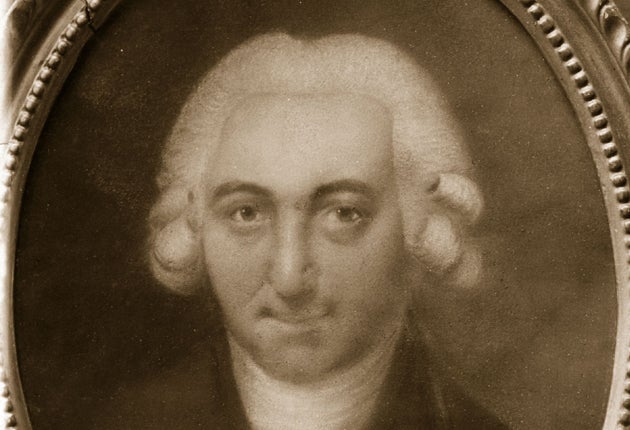Works of art that will never win the heart
Conceptual writing appeals more to the intellect than the emotions. Hannah Duguid is intrigued but still left feeling cold

Shandy Hall in Coxwold, near York, is the house where Laurence Sterne wrote his experimental novel The Life and Opinions of Tristram Shandy, Gentleman.
His house is now a museum and there is a gallery showing contemporary art that is influenced by his eccentric spirit. Douglas Gordon, Rachel Whiteread and Cornelia Parker have all made work inspired by Sterne.
This autumn, the gallery opened The Perverse Library, the first exhibition of conceptual writing to go on show in this country. It claims to be an emerging art form, a fusion of art and literature, influenced by the first artists' books by Ed Ruscha and Sol LeWitt, as much as by writers such as Sterne, Gertrude Stein and James Joyce. "Conceptual writing seeks to ask what would a non-expressive poetry look like? A poetry of intellect rather than emotion?" says Professor Craig Dworkin, a leading figure in the movement.
The blog of the Poetry Foundation has had fierce online debates where poets have expressed fury about a form of literature where "writing is the idea and the idea is writing".
Conceptual writing is not easy to grasp, or to read. It is not about pleasure, or narrative. It brings together conceptual art and language. The excitement is intellectual rather than aesthetic, and it can be witty. It might be a transcription of a year of weather reports by Kenneth Goldsmith, or John Baldessari's repetition of the sentence: "I will not make anymore boring art".
"Conceptual writing is a necessary thing in our culture where we feel language is impoverished by everyday use," says the artist Professor Pavel Büchler, of Manchester Metropolitan University. "It repairs the damage done by bureaucratic and managerial language. Conceptual writing keeps open possibilities in language."
Conceptual writing is a computer program by artist Simon Morris, which randomly reorders the entire text of Freud's The Interpretation of Dreams. Or, it is a book by Nick Thurston in which the author has removed all the text from a book by Maurice Blanchot, except notes he made in the margin. In the centre of the gallery stands a bookcase. It is made of Perspex and the transparent shelving makes the books appear to float, hence its title: The Invisible Bookshelf. The books on show were chosen in response to the library of Professor Dworkin. His latest book, titled The Perverse Library, is a list of every book that he owns, all 2,427 of them. He writes that the books we own reveal less about us than the books that we don't own and that a library must have what he calls "dynamic tensions". A random assortment of books is not a library.
The Yorkshire artist Greville Worthington has made a sculpture using carbonised books and titled it The Black Library, after Sterne's black page. The carbonised pages are frozen in a beautiful black ripple.
In another work, Worthington has inserted a book within a series of steel oil drums. In the digital age, our reverence for books as objects is waning. By housing each book individually, and carefully, Worthington gives them value. Inside the barrels are more carbonised books, mashed up and used as compost, out of which grow chilli and olive trees. Surrounded by these objects, within the museum and the gallery, are many books, by James Joyce, B S Johnson and Italo Calvino, which are in tune with Laurence Sterne's experimental legacy: non-linear narrative, a black page to mark death, abrupt endings, digressions, missing text and a blank page on which the reader must imagine the most beautiful woman they have ever seen.
What separates these writers from conceptual writers is imagination. Conceptual writing is only imaginative as an idea, though its appeal to the intellect can leave one feeling cold.
In keeping with Sterne's topsy-turvy spirit, the opening party for this exhibition will take place on the closing night.
The Perverse Library, Shandy Hall, Coxwold, York (01347 868465; www.laurencesternetrust.org.uk) to 31 October
Join our commenting forum
Join thought-provoking conversations, follow other Independent readers and see their replies
Comments